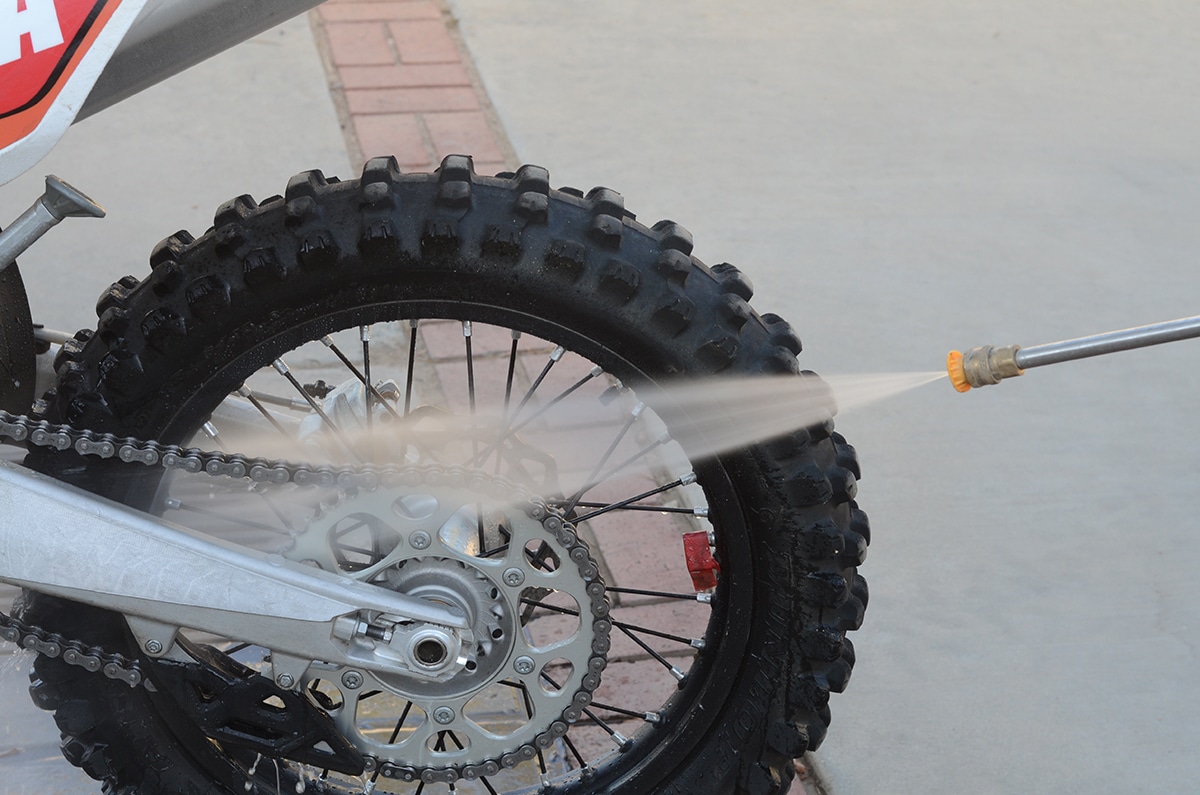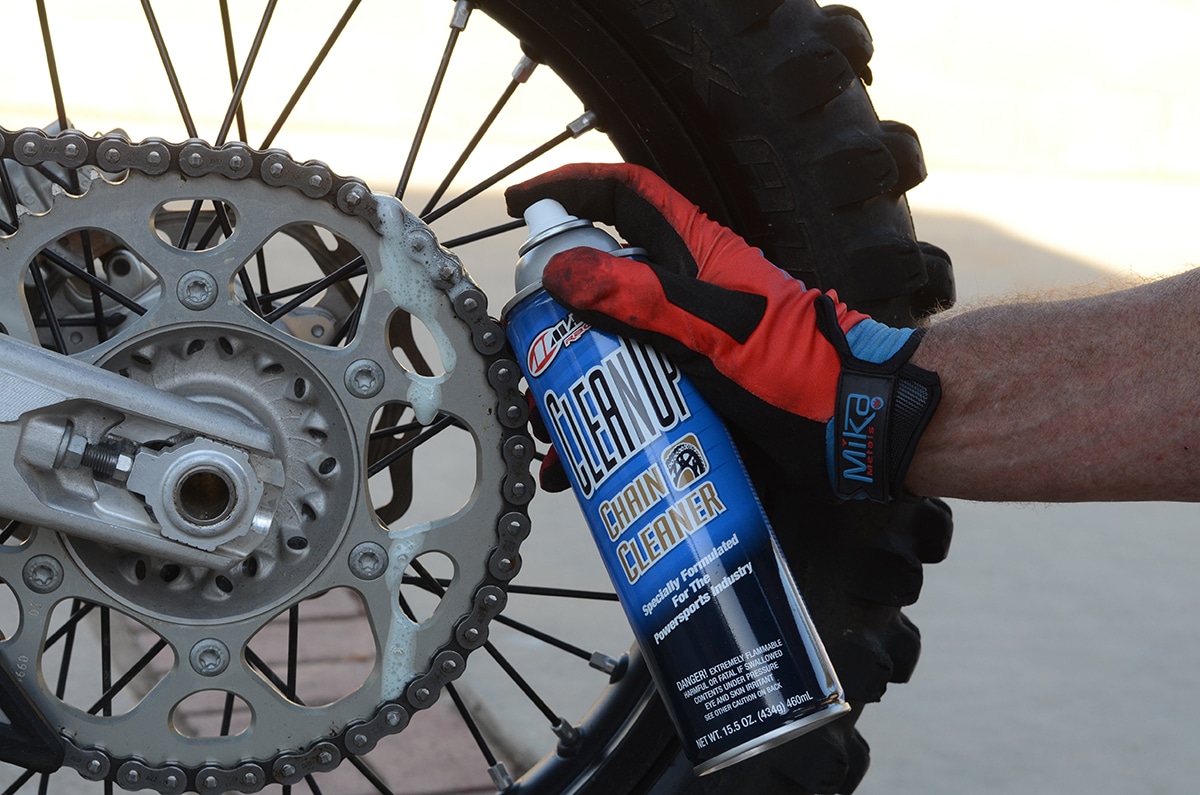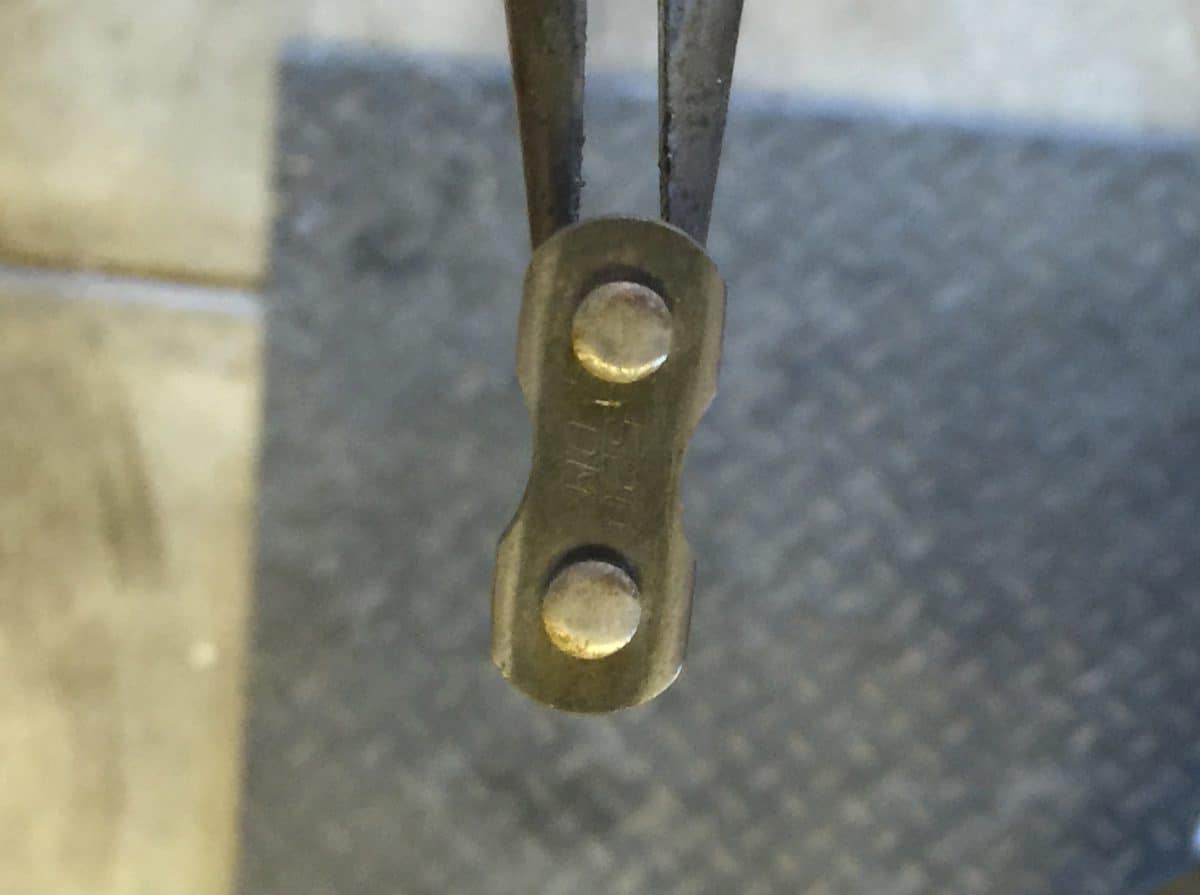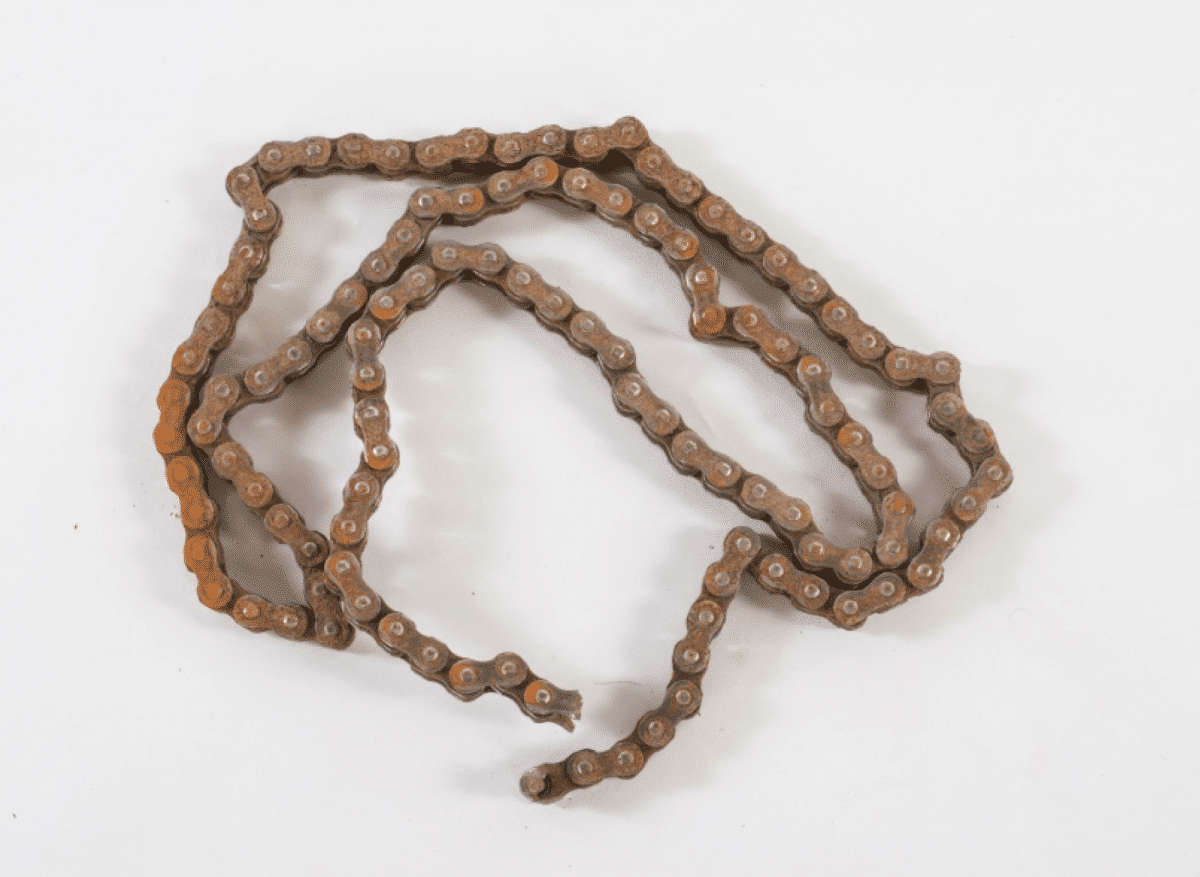Cleaning, lubrication and setup are key
About four decades ago we ran a story called “How to oil your chain”. During that time frame dirt bikes were air-cooled, drum braked, dual shocked and suffered the growing pains that itch at a new motorized sport. Things broke. Parts were cheap. Manufacturing was inconsistent and as the sport evolved, all facets have morphed from primordial to advanced. In 1975 we had chains that stretched like rubber bands and our basic maintenance was a hard-core wire scrub brush job and then a good soaking in a tub of old engine oil.

The advancements in technology have been stunning. Today’s chains on OE machines are quite excellent and the aftermarket is ripe with models ranging from motocross models where weight and tensile strength is a commodity, to O-ring/X-ring chains that target the off-roader who plops in a muddy world where the driveline is constantly abused by both engine torque and Mother Nature.

Too, today nearly everyone has a pressure washer in the garage. Our dirt bikes get scorched by water pressure, leaving the outside of the machine bristling while the parts that churn, turn and grind can get left unmolested and clearly in need of attention. On our drive chains this means that proper lubrication is crucial. On a standard chain spraying the outside of the chain will keep it from rusting, but it does little to penetrate the rollers that do the majority of the work. Same thing goes for O-ring/X-ring chains; they need to be properly cleaned and anointed with lubrication if you expect them to resist premature stretching and fight off high wear fatigue.

We’ve enlisted to some help from some key folks in the chain, sprocket and lubrication business for this story. The tips range from proper cleaning, to chain alignment, chain tension and of course, proper oiling. The majority of this information is basic common sense, but then again the idea for the story started when we watched one of our testers pressure wash his bike and then spray WD-40 over the chain, calling it good. It’s not.

How to clean:
Every situation is different and depending on the severity of buildup from dirt, grime, sand, mud or leftover chain lube you may need a brush / chain cleaner combo or just a chain cleaner by itself. First, rinse chain with water (hose or pressure washer) to remove light buildup on the chain. Next, apply chain cleaner to all areas of the chain ensuring inner, outer and sides are covered completely. Allow chain cleaner to sit for 60 seconds or the time specified from the manufacturer. Rinse chain with water to remove chain cleaner and dissolved buildup. If the chain still has remaining buildup, re-apply chain cleaner and use a cleaning brush to breakdown stubborn areas. Rinse chain.















Comments are closed.